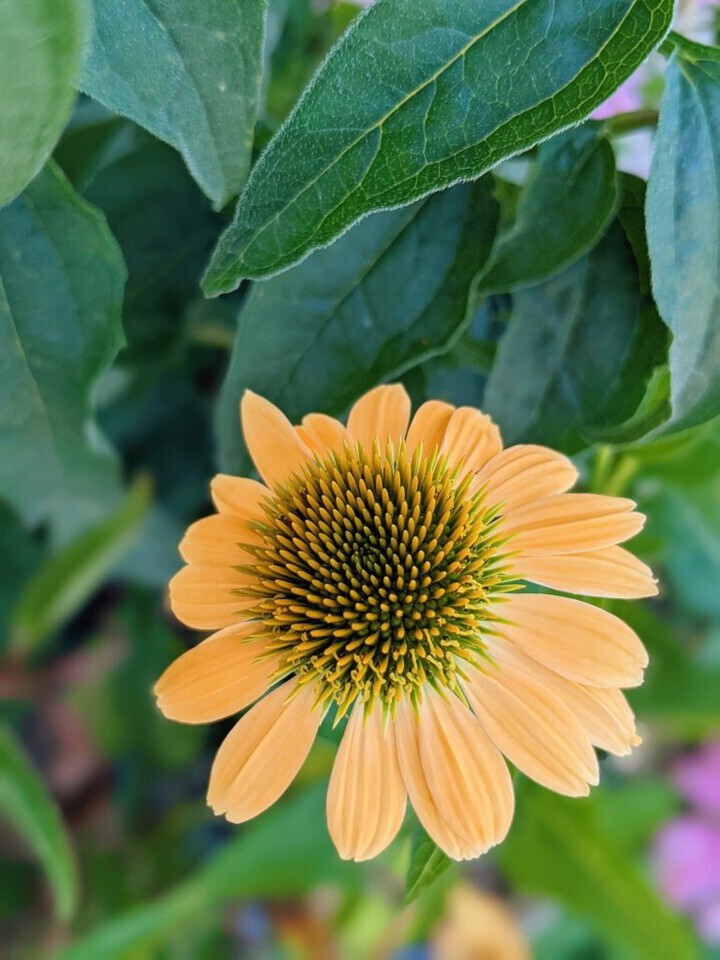Scientific Name: Echinacea purpurea
Common Name: Coneflower
Common Species/Varieties: Bravado, Summer Flare, Green Jewel
Common Colors: Purple, yellow, orange
Plant Type: Flower
Annual or Perennial: Perennial
Hardiness Zone: 3-10 USDA
Self-Seeding: Yes
Bloom Season: Summerl
Grows Best In: Full sun or part shade
Fun Fact: Echinacea gets its name from the Greek word ekhinos, meaning Sea Urchin.

Echinacea is an absolute favorite of pollinators, and is the perfect plant for your garden if you want to feed the bees and attract colorful butterflies! It’s not a picky plant, and can grow even in rocky soil (but it won’t like very wet beds). It’s happy with four hours of sun, and it doesn’t care if that sun comes in the morning or afternoon. Echinacea is a drought tolerant plant once it’s established, but if you’re planting echinacea for the first time you’ll want to keep it well watered until it’s big and strong. Echinacea doesn’t spread, so you can rest assured that it will grow tall and stay put year after year. You can expect it to grow to around four feet in height, so plan to place it in the back or in the center of a grouping of plants. Cut echinacea flowers and put them in an indoor arrangement, and trim away dead flowers, in order to encourage new growth. Echinacea is self-seeding, so if you let some blooms go to seed at the end of the growing season (late Fall), they will scatter and sow new plants for you. Birds and squirrels looking for winter snacks will also benefit from allowing echinacea go to seed.

Echinacea has long been used as an immune booster and is said to have the ability to shorten or lessen the severity of colds. It’s commonly used as a tea, and often as a tincture as well. It was used by Native Americans often, and to treat many different kinds of ailments. It’s considered to be anti-inflammatory, and is used in herbalism to this day (but always consult a doctor before taking anything in a medicinal capacity). Echinacea is a flower symbolizing strength and health. It comes in many different color varieties. The main color is a magenta-ish purple, but it can be found in shades of pink, white, yellow, orange… and there’s even an echinacea that has coloring similar to that of a watermelon!